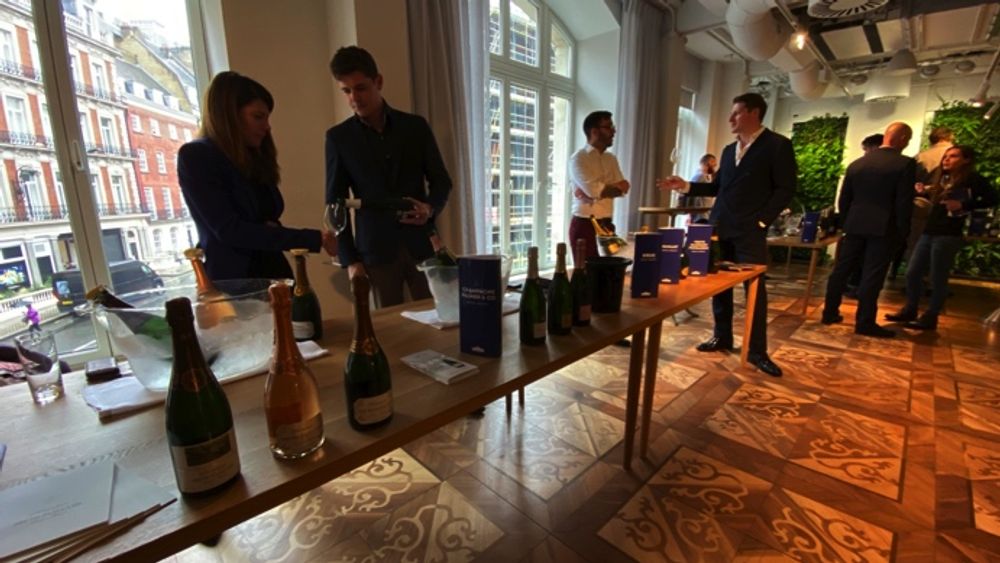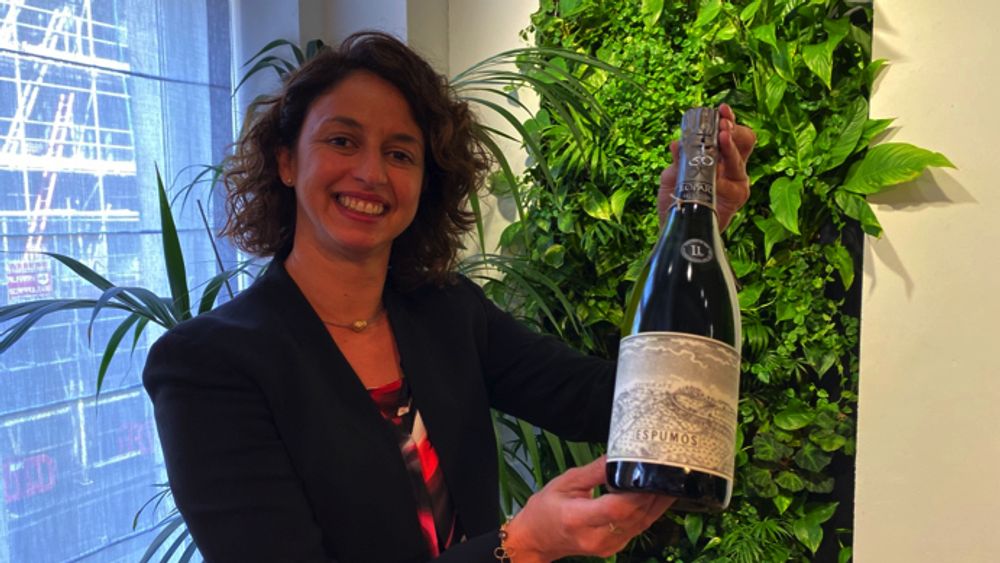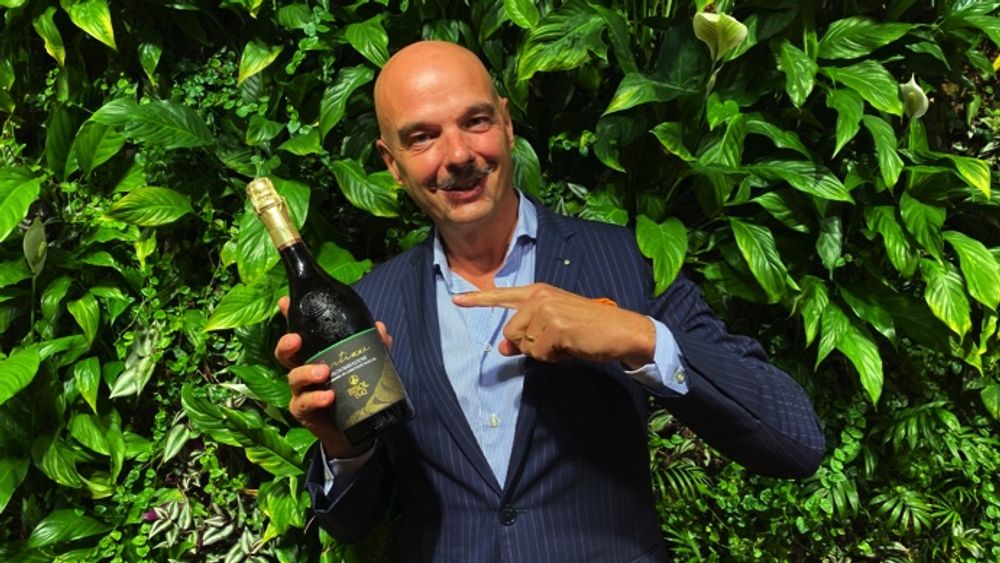In Penedès producers have started using the term “Corpinnat” – a project based on rules including manual harvesting, estate-vinification, minimum ageing and organic certification.
Well folks, it’s October and we all know what that means! Yes indeed, it’s time to start thinking about what bubbles you’re going to be pouring your loved ones this Christmas. OK, maybe it’s not time to decide what to buy for yourself, but for on-trade boys and girls it’s definitely time to start thinking about what you’re going to be stocking come November and December.

Fizzics – BIbendum’s sparkling-focused tasting, Soho, London October, 2019
With that in mind I trundled down the drizzly streets of Soho to attend Bibendum’s Fizzics, the 4th time they’ve run their fizz-focused tasting with plenty of open bottles and a handful of sociable producers on hand to answer our questions and drum up some festive fervour.
The beauty of these more focused tastings, rather than a large generic tasting, is that they’ve got the opportunity to open most of the bubbles on their list. It was great to see five of their seven English fizzes open, including my first try of Fitz Sparkling, the charmat method wine offering a fruitier take on English sparkling wine and at a lower price point.
But enough about all that, let’s give you a run through some of the wines that caught my eye and the reasons why…

Ridgeview, Sussex, England
It was a great chance to catch up with Tom Surgey, Ridgeview’s sales and business development director. I asked him about his take on the viewpoint that it’s a crime if English wineries are starting up without sound sustainable practices in place.
He revealed that Ridgeview is going under huge sustainability audits, especially in the light of their shiny new multi-million pound winery. These audits are set up in conjunction with the fledgling sustainability initiatives set down by Wine GB. OK, for now it only includes the winemaking and vineyard practices, but it was good to see one of the bigger set-ups of the English wine world fully embracing sustainable practices as part of sensible economics and future business strategy.

Llopart, Corpinnat, Spain
Next big impression on the day was made by the very cool and wonderfully named Jesi Llopart I Llopart. I think she might be related…
Llopart has stopped using the term Cava on its labels. It’s the view that the DO is so spread out and generic in what it offers that it’s ‘no longer fit for purpose’ and is time for something new. So a group of wineries in the Penedès region have started using the term “Corpinnat”.
It’s a project based with geologists and winemakers, and the rules include: manual harvesting, wines vinified at the property, an age minimum of 18 months, and the winery must offer a 30 month and a 60 month wine. Oh, and did I mention, the farming has to be organically certified!
It’s in its infancy, so just nine wineries are signed up, but with four more in conversion, and a potential 23,000 hectares of Penedes in the Corpinnat territory, this could really make some waves in the coming years.

Palmer, Champagne, France
Arthur Camut, export area manager for Champagne Palmer, came to give us a talk worryingly entitled “Does Size Matter?” There weren’t that many guys that signed up to hear the answer on this one!!
Luckily it turned out to be about the difference between Champagnes that have developed in bottles versus those in magnums. Palmer is so enamoured with magnums, that they often refer to bottles as half-magnums!
The main fun here was the talk about climate change and how Palmer has found itself in a curiously lucky/brilliant spot. As the region of Champagne gets warmer the once cool north-facing vineyards of the Montagne De Reims and their Premier Cru vineyards of Trépail and Villers-Marmery are becoming more sought after. Once scoffed at by the Chardonnay growers of the Côte Des Blancs, it’s in this cooler area that the fresh, saline flavours are still available to the Champagnois.
As large houses like Moët buys up producers like Janisson in order to have access to these fresher vineyards, it’s here where Palmer has always been based. They’re sitting pretty and producing top quality, classic styles of fresh and moreish Champagne.

Bisol, Prosecco, Italy
Gianluca Bisol arrived looking sharp as a tack and sporting what can only be described as a game-changing moustache. He also brought along his premium Cartizze and a Traditional Method sparkling wine made from Glera.
I’ll let other people tell you the upside of Traditional Method Glera, because I quite frankly don’t understand why they bother. It’s a great drink by all means, but you don’t catch the Champagnois messing around with Charmat Method do you?
What I loved here was that it was the Valdobbiadene hills that were clearly the star in this man’s eyes, including his wines from the world famous Cartizze hill.
Is one Prosecco DOC that much different from another Prosecco DOC? No
Is one Brut Valdobbiadene Prosecco Superiore DOCG that much differrent from another Brut Valdobbiadene Prosecco Superiore DOCG? No
But are the wines of Conegliano Valdobbiadene Prosecco Superiore DOCG consistently better than Prosecco DOCs? Absolutely!
Are the wines from the various Rives and the wines from the Cartizze hill premium quality wines that deserve your attention? Damn right they are!
Conclusion
So there you are, a few things to think about when stocking up your bar, or shop, or even your own wine rack this winter.
Oh, and they’ll all go great with your bacon butties on Christmas morning. Just saying!
Cheers
































